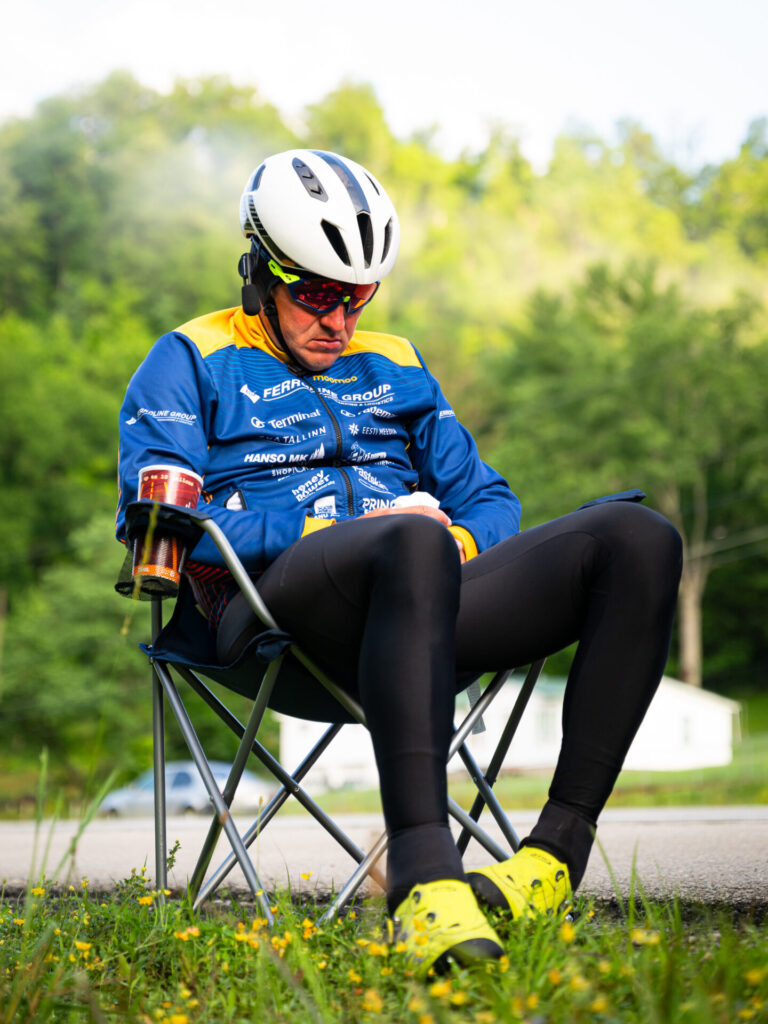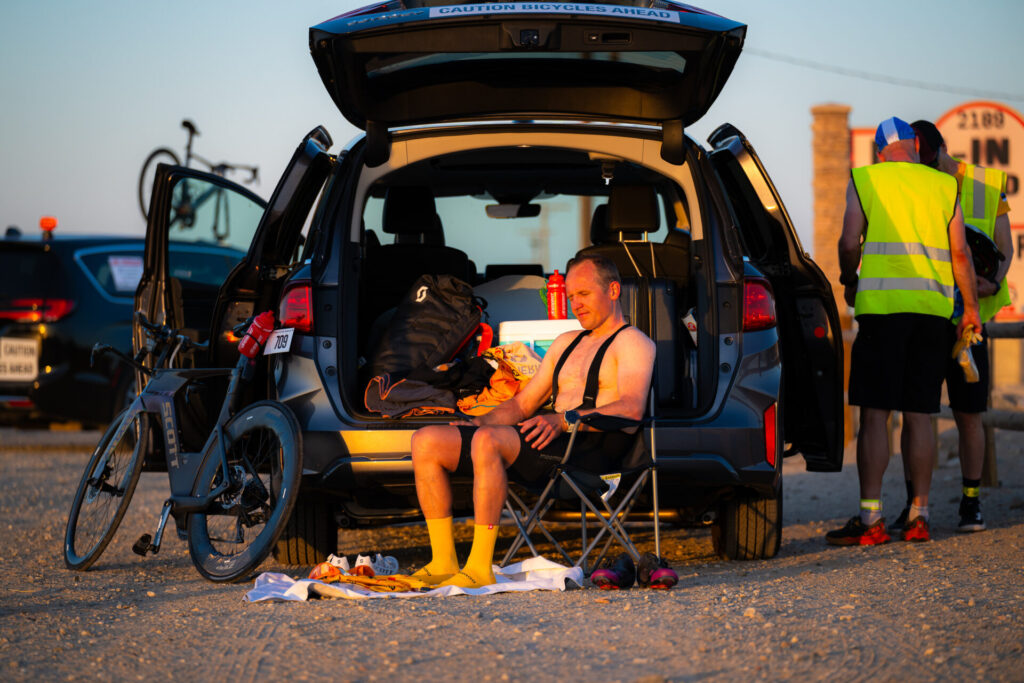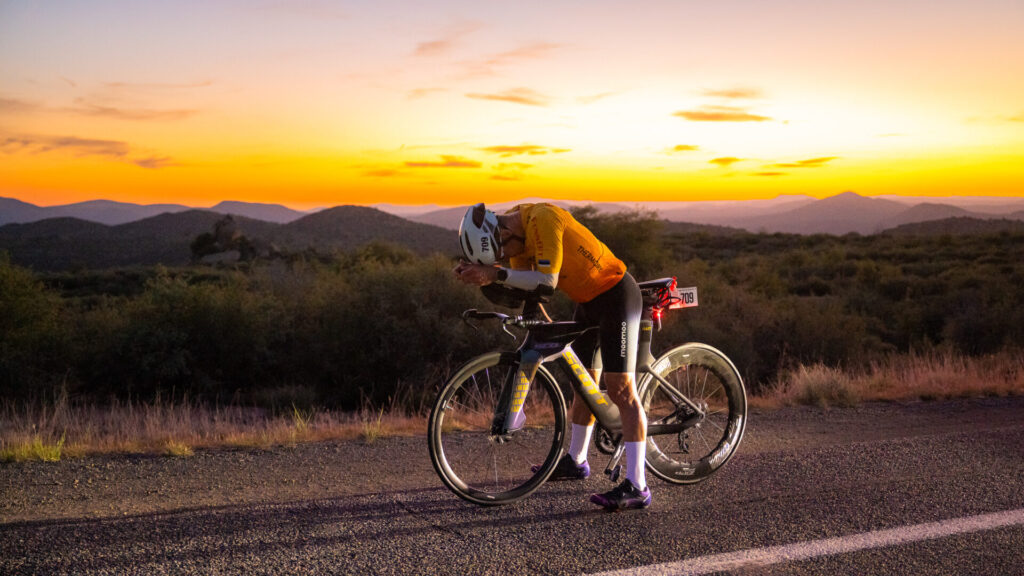When I think about what I missed the most during Race Across America, there’s no doubt—it was sleep. And that’s exactly where this recap should begin.

RAAM Sleep Strategy: The Plan vs. Reality
The original idea was to pedal through the first 24 hours non-stop, and then follow a routine of approximately 1 hour of sleep during the day and 2 hours at night. But reality hit the plan hard right from the first day. The planned daytime nap didn’t work out—fatigue hadn’t fully accumulated yet, and the extreme heat didn’t help either. I ended up getting my first proper sleep on the second night in Flagstaff: 2 hours and 50 minutes. By that point, I had been awake for 46 hours straight, as I had already woken up at 4:30 AM on race day (likely due to pre-race nerves and jet lag).

Surprisingly, I felt quite fresh after that short sleep, and since I didn’t feel sleepy at all during the following day on the bike, I quickly realized that a single nightly nap worked best for me—ideally around 2 AM. Over the next three nights, I aimed for 3-hour naps, but in reality, I slept less, and the sleep quality was poor due to constant coughing and clearing of mucus. Still, I was amazed each day at how well my body functioned during daylight hours without any drowsiness.
From the fifth night onward, after I had left the 3,000-meter mountain peaks behind and descended to below 1,000 meters above sea level, the quality of sleep improved significantly. I continued like this for 8–9 days, constantly surprised at how my body managed with such little rest. But then everything changed. A wave of sleepiness hit me—so intense and hard to describe in words—that it started affecting me even during the day. It became nearly impossible to resist, and I had to stop several times to take short “power naps” (around 10 minutes), which gave me a mental reset to keep pedaling for another two hours before drowsiness returned.
It seems the body can endure surprisingly well on minimal sleep for about 8–9 days, but after that, it begins to demand payback. Perhaps that’s exactly what RAAM winners understand and use to their advantage—that the body can tolerate extreme sleep deprivation for a finite window, which needs to be fully exploited time-wise. If you’re on the road for more than 9 days, the creeping fatigue begins to slow you down and forces more frequent stops. Maybe that also explains why I was able to move up several positions in the general classification during the final days and eventually finish fourth overall.

If I were to do RAAM again, I might experiment with even less sleep—perhaps 2.5 hours per night starting from the second night. However, I think I’d have a better chance at improving my finish time by minimizing other forms of downtime.
HRV as a Mirror of Recovery
One of the key metrics I consistently track is HRV—heart rate variability. My Garmin watch tracks HRV overnight, providing valuable insights into my body’s recovery state and autonomic nervous system balance.
Right before flying to the U.S., my HRV averaged between 77–90—a sign that I was in good shape and ready for the challenge. But around five days before the start, the trip itself, the time zone adjustment, and a sleepless night on the plane (I can’t sleep on planes) caused a significant drop in HRV, bringing it down to 42–62. A clear sign that my body hadn’t yet stabilized.
During RAAM, HRV dropped even further—a predictable reaction to the multi-day extreme effort. I don’t have consistent data from that period, but the downward trend was clear. After the race, HRV remained low and fluctuated quite a bit – the overnight average for the month following the race was 57. In recent days, however, HRV has begun to climb again (reaching up to 70), signaling that my recovery is now in its final stage.

At the moment, my focus is on sleep, easy training, and mental calm—giving my body space to fully recover and regain balance. Looking back at all the challenges I’ve faced so far, I can say this: recovering from RAAM has been the most time-consuming of them all.